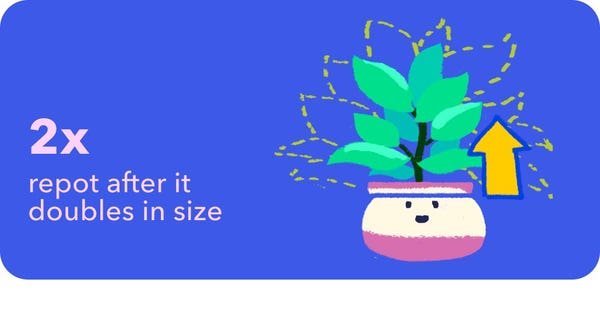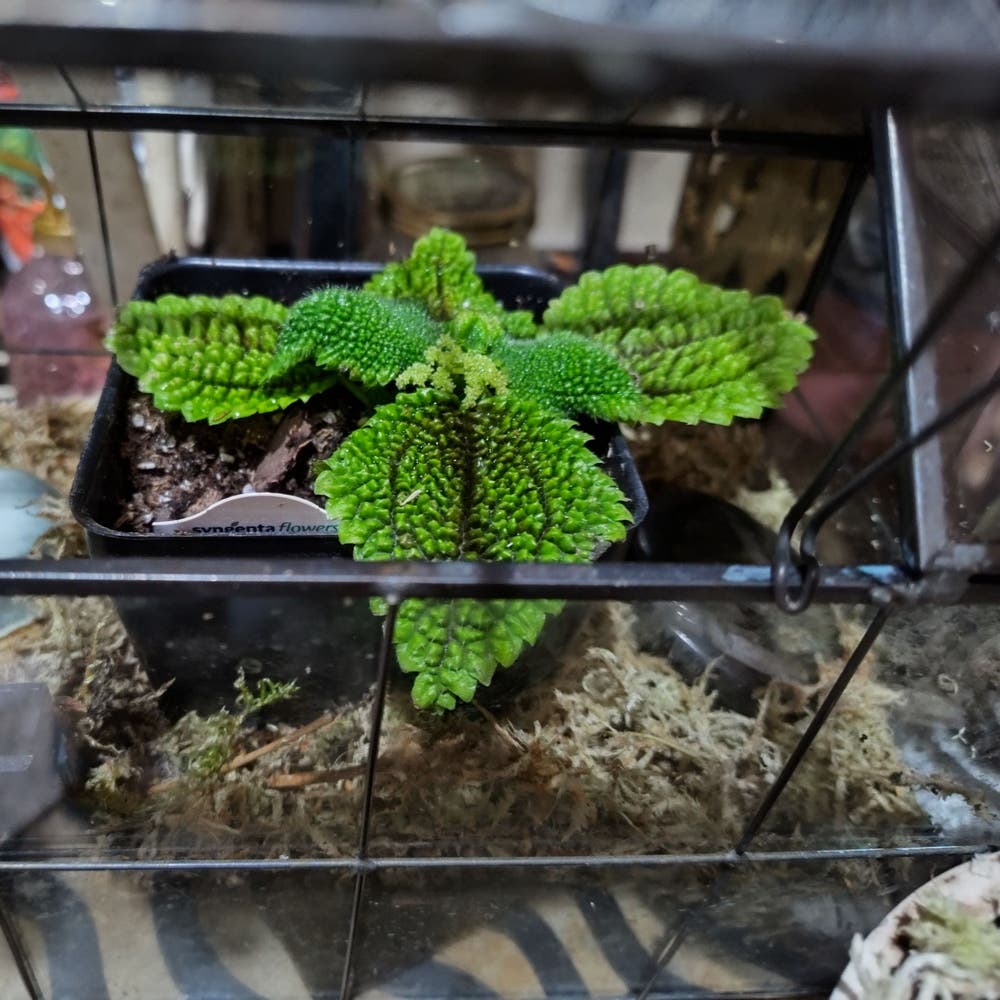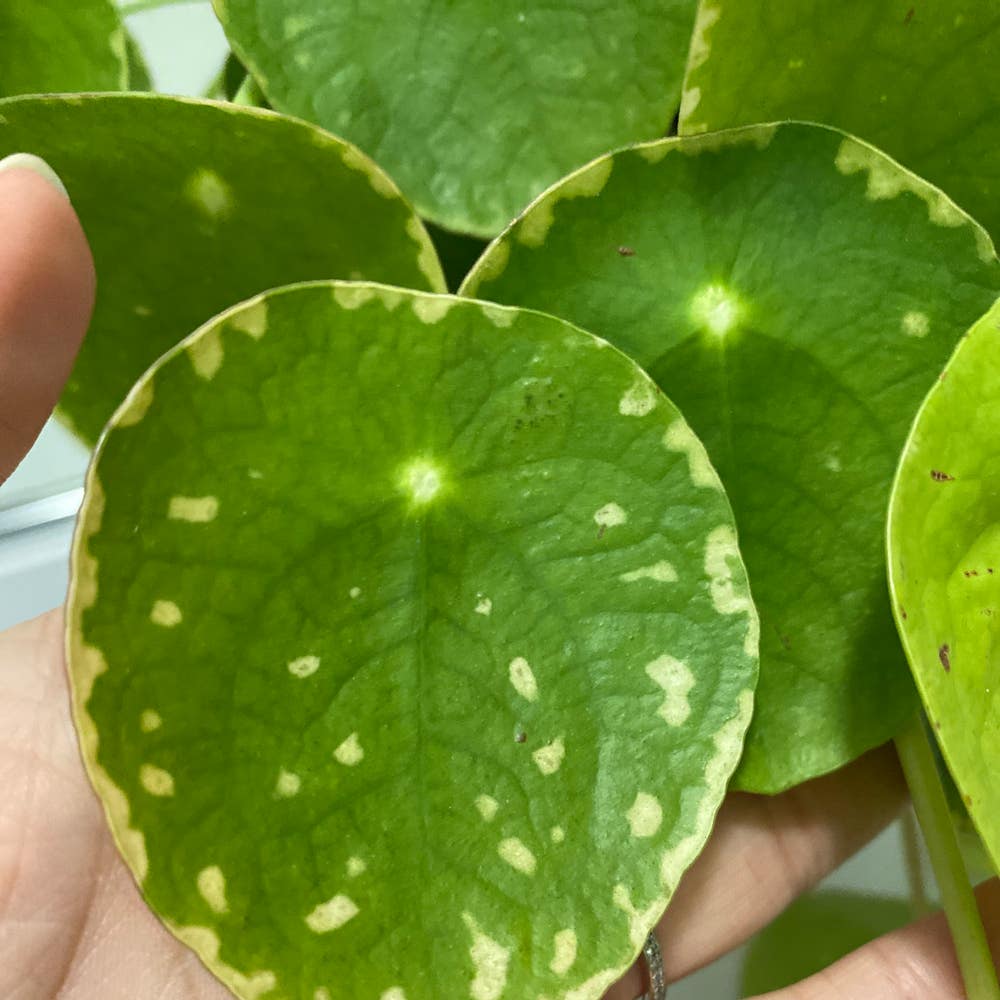

Pilea serpyllacea 'Globosa'
About Pilea serpyllacea 'Globosa'
Pilea plants are native to regions worldwide, and often have succulent, water-storing leaves. A handful of them are grown as houseplants, but the rest of the 600+ species are wild plants. Their name comes from the Latin for 'felt cap' which refers to the unique way that their fruits are protected. Fossils of Pilea species have been found dating back over 5 million years ago!
Taxonomy

Pilea serpyllacea 'Globosa'
Pilea
Urticaceae
Rosales

How to care for Pilea serpyllacea 'Globosa'
How often to water your Pilea serpyllacea 'Globosa'

every 9
Pilea serpyllacea 'Globosa' needs 0.5 cups of water every 9 when it doesn’t get direct sunlight and is potted in a 5" pot.
Use our water calculator to personalize watering recommendations to your environment or download Greg for more advanced recommendations for all of your plants.

Water 0.5 cups every
9
Finding light for None in your home

a window
Pilea serpyllacea 'Globosa' may have difficulty thriving, and will drop leaves 🍃, without ample sunlight.
Place it less than 3 feet from a south-facing window to maximize the potential for growth.
Select your region to see how the current weather in your area affects the placement of Pilea serpyllacea 'Globosa' in your home 🏡.
How to fertilize Pilea serpyllacea 'Globosa'

Most potting soils come with ample nutrients which plants use to produce new growth.
By the time your plant has depleted the nutrients in its soil it’s likely grown enough to need a larger pot anyway.
To replenish this plant's nutrients, repot your Pilea serpyllacea 'Globosa' after it doubles in size or once a year—whichever comes first.
-
Really worried about my pilea moon valley Looking for guidance! My plant had black spots suddenly on most of its leaves so I cut them all off immediately thinking it was root rot and then repotted the plant. When I was repotting I noticed that the soil had been quite compact. Now my girl is so sad and demoralised looking. Can she recover from this? How can I help? #Pilea
-
My pilea wasnt looking so good the past winter so i had to plop this bad boy into lecca and it looks like its doing well. I see a new leaf coming. #Pilea
-
Brown dry spots My #Pilea has these dry looking brown spots. Been thinking it wasn’t getting enough humidity but I moved it to a bright bathroom and it keeps drying. Any suggestions?
-
Yellowing leaves #Pilea my Chinese money plant’s leaves are yellowing. Is this an indicator of not enough water?
-
Don't let my excitement over my Tradescantia Nanouks overshadow how cool these Petra Croton and Friendship Plant (Pilea involucrata) are! I got these at the same greenhouse today. 😁 #greggang #newplantmom #newplants #petracroton #croton #friendshipplant #pilea #happyplants #plantaddict #plantsmakepeoplehappy
-
At what humidity level should I keep my friendship plant at? @PlantBeach , I decided to put my friendship plant into a terrarium! Yours looked so happy, and I had one already, so I thought it was a good idea. I kept him in the plastic nursery pot with drainage, added sphagnum moss with a bit of compost. 😊 What humidity level should I keep it at? I have a gauge so I can keep a close eye on it! 🌱 #greggang #greggers #gregfeedback #happyplants #pilea #friendshipplant #terrarium #plantaddict #plantsmakepeoplehappy #planttherapy
-
Hey everyone; Any idea how to fertilize a friendship plant that’s in a tiny pot and what to use? #Pilea
-
How do I propagate this plant? I found this clipping on the floor in the store and wanted to give it a try #Pilea how do I propagate her?
-
What’s up with Bartleby? #Pilea getting light spotty patches all over. No pests or root rot. Gets good morning sun.
-
Hey plant friends/fam does anyone have any care tips for me her name is Missy she’s a pilea friendship plant anything is appreciated #HappyPlants #Pilea #PlantsMakePeopleHappy
Care Summary for Pilea serpyllacea 'Globosa'

Pilea serpyllacea 'Globosa'
 Greg recommends:
Greg recommends:
 Water
Water
0.5 cups every 9 days
 Placement
Placement
< 3ft from a window
 Nutrients
Nutrients
Repot after 2x growth
Based on the 4” pot your plant is in, and that it doesn’t get direct sunlight.

 Trending in your area
Trending in your area
 Similar to Pilea serpyllacea 'Globosa'
Similar to Pilea serpyllacea 'Globosa'
✨ Discover rare plants

Sedum 'White Diamond'

Crassula 'Purple Drag…

Croton Nervia

Carolina Reaper

Stanhopea tigrina

Anthurium Fingers

Cereus peruvianus 'Pa…

Strawberry Shake Phil…

Vatricania guentheri

Pine Cone Plant

Chinese Evergreen 'Ga…

Hoya pottsii 'Khao Ya…

Ceropegia simoneae

Peperomia 'Harmony's …

Joan Daniel Echeveria

Black Monkey Thorn Tr…

Sedeveria 'Blue Elf'


































